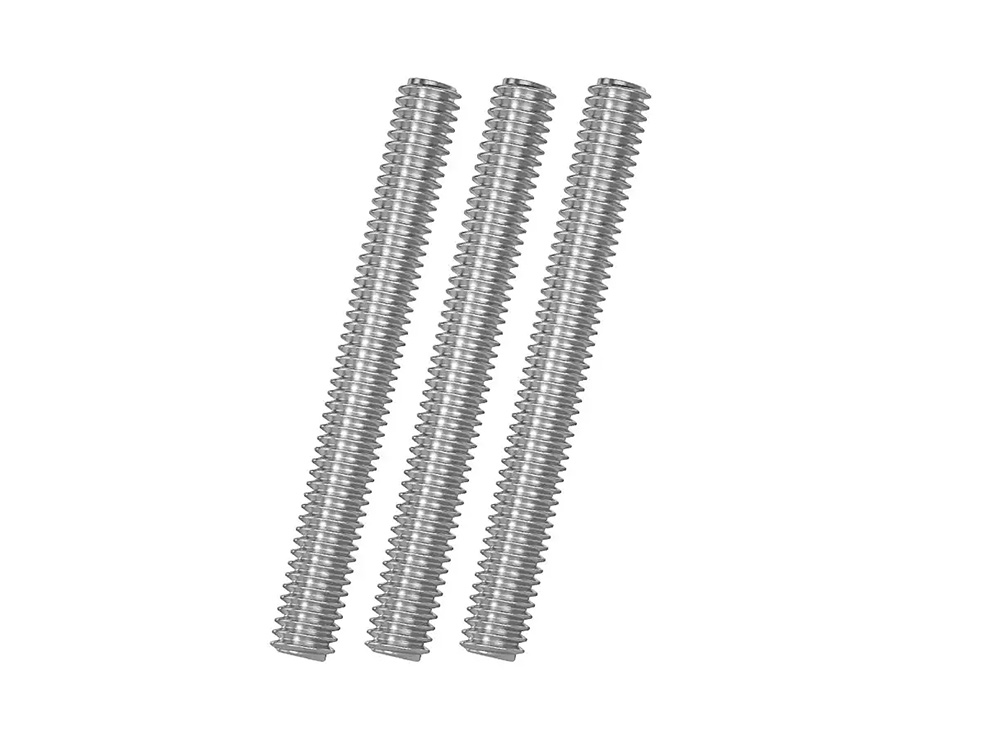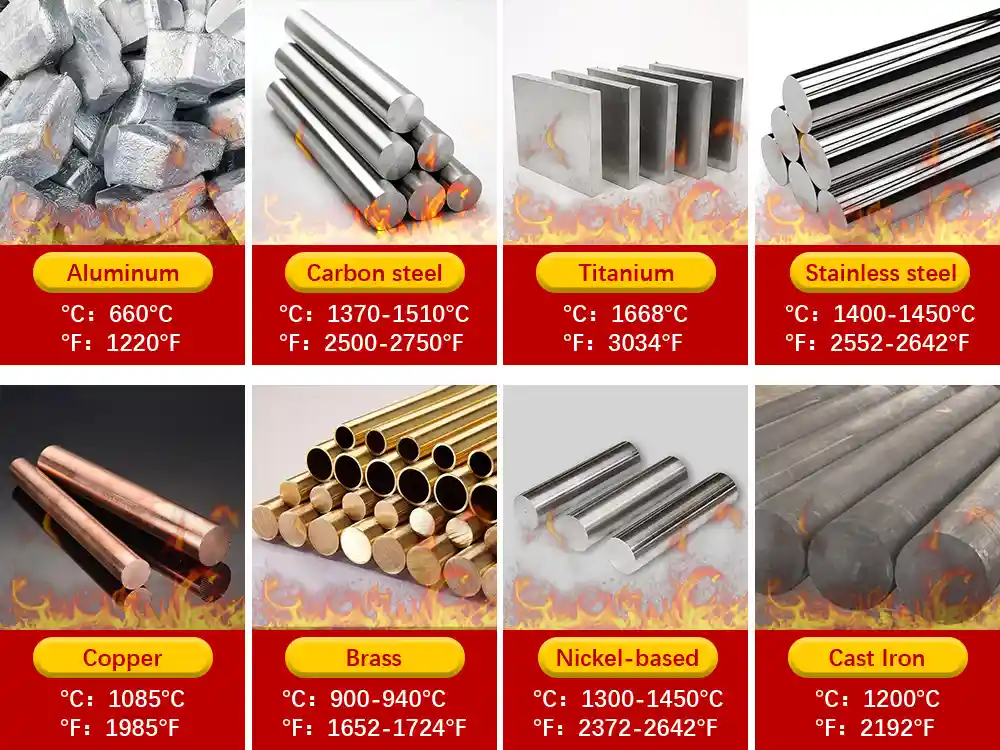
Melting temperature of metals is all about the the right cutting tools, coolant strategy, and machining parameters to your material, making sure we hit your tolerances the first time. At Chiheng, we’ve spent years perfecting how we work with metals that have very different melting points. From soft aluminum alloys to high-temperature titanium and steel, we know exactly how each material reacts to heat during CNC machining—and how to keep that heat under control. In this guide, we will walk you through the key knowledge of how melting affecting cnc machining processes.
The melting point of a metal refers to the temperature required for it to transition from a solid to a liquid state, and this characteristic is crucial in the field of CNC machining. The melting point directly influences how a metal material reacts to heat during cutting, drilling, or milling, which in turn determines machining performance, tool selection, and cooling strategies. For example, metals with lower melting points are more susceptible to heat during machining, while those with higher melting points can pose greater challenges for cutting tools. Therefore, understanding the impact of melting point on the machining process is key to optimizing CNC machining.

Example: The chart show the steel melting temperature is between 1370–1510℃/2500–2750℉.
During CNC machining, heat generation is inevitable due to cutting actions, friction between the tool and workpiece, and chip formation. This heat can lead to “thermal softening,” where the cutting zone reaches a temperature high enough to reduce material hardness, affecting machining outcomes. For low-melting-point metals like aluminum or brass, thermal softening occurs more readily, potentially causing localized melting, chip dispersion, tool edge buildup, or poor surface quality. Conversely, high-melting-point metals, such as titanium or certain steels, are less prone to melting but tend to retain heat longer, which can increase tool stress and cause thermal deformation. Therefore, the melting point of a metal necessitates tailored heat management strategies, directly influencing the selection of cutting parameters.
| Metal Type | Cutting Speed | Tool Requirements | Cooling Strategy | Feed Rate and Depth of Cut Considerations |
|---|---|---|---|---|
| Low-Melting-Point Metals (e.g., Aluminum, Brass) | Allows higher cutting speeds for efficiency | Standard tools are sufficient | Requires efficient cooling (e.g., coolant spray) to prevent overheating and deformation | Avoid excessive pressure to prevent workpiece deformation or surface damage |
| High-Melting-Point Metals (e.g., Titanium, Steel) | Requires slower cutting speeds to control heat buildup | Needs more robust tool materials | Requires aggressive cooling to prevent premature tool wear | Avoid overly aggressive cuts to prevent tool overheating |
In CNC machining, a metal’s melting point—the temperature at which it turns from solid to liquid—plays a critical role in determining key settings, such as tool selection, cutting speed, and cooling methods. Low-melting-point metals, like aluminum, tend to soften or deform under heat, while high-melting-point metals, such as titanium, are harder and require robust tools and advanced heat management due to their ability to withstand higher temperatures. By understanding a metal’s melting point and adjusting these parameters accordingly, manufacturers can achieve high-quality cuts and precise parts.
Choosing the right cutting tool is essential for managing heat and wear during machining, and this choice depends heavily on a metal’s melting point:
| Metal | Melting Point (°F) | Recommended Tool Material |
|---|---|---|
| Aluminum | ~1220 | High-speed steel or carbide |
| Stainless Steel | ~2550 | Coated carbide |
| Titanium | ~3035 | TiAlN coated carbide |
| Copper | ~1984 | Sharp carbide |
| Brass | ~1700 | High-speed steel or carbide |
Effective heat management and precision control are vital for addressing the challenges of machining metals with different melting points. Key strategies include:
Cooling and Lubrication:
By combining cooling, temperature monitoring, and tailored cutting strategies, manufacturers can minimize thermal distortion and achieve consistent, high-quality results across metals with varying melting points.
When we machine aluminum, the biggest challenge is its low melting point (around 1220°F / 660°C). Heat builds up fast, and without the right cooling, the material can soften, smear, or even stick to the cutting tool. That’s why we run higher cutting speeds but pair them with efficient coolant flow and sharp tools designed for aluminum alloys.
Titanium, on the other hand, has a high melting point (over 3000°F / 1650°C) but poor thermal conductivity. The heat stays concentrated right where the tool meets the material, which can cause rapid tool wear if not controlled. For titanium, we slow down the cutting speed, increase feed pressure, and use coated carbide tools that can handle both heat and hardness.
Simple difference:
Aluminum – watch out for melting and chip sticking
Titanium – watch out for tool wear and overheating at the cutting edge
For high melting point metals like titanium, stainless steel, or Inconel, we focus heavily on precision temperature control:
By combining these methods, we keep surfaces smooth, tolerances tight, and production efficient, even when working with tough, high-temp alloys that are known for being difficult to machine.
When the melting point of a metal comes into play during CNC machining, it can cause a few headaches if not managed properly. Here are the most common issues we see:
Rapid temperature changes during cutting—especially on metals with high thermal conductivity like aluminum or copper—can stress cutting tools. Coolant hitting a hot tool can cause micro-cracks, leading to faster wear and unexpected breakage.
Low melting point metals, like certain aluminum alloys or brass, can soften or smear under heat. Instead of a sharp, clean cut, you may end up with rough spots, built-up edge on the tool, or even sections that look “welded” due to localized melting.
Heat buildup can warp the part, especially with thin-walled or long components. Thermal expansion followed by cooling can alter the final dimensions, affecting precision. This is more common in metals with lower melting points or poor heat dissipation.
Quick prevention tips:
Each metal reacts differently to heat during CNC machining. Adjusting cutting data helps prevent thermal issues like softening, warping, or tool damage.
General Guidelines
| Metal | Cutting Speed (SFM) | Feed Rate | Cooling Needs | Additional Knowledge Points |
|---|---|---|---|---|
| Aluminum | 800-1200 | Moderate | High coolant flow | – Low melting point (approx. 660°C/1220°F) makes it prone to heat buildup; sharp tools are key. – Excellent machinability, but sticky nature requires high coolant flow to prevent adhesion. |
| Steel | 100-400 | Medium to high | Steady coolant flow | – Melting point varies (e.g., 1370-1530°C/2500-2786°F for carbon steel); hardness affects speed. – Common grades (e.g., 1018, 4140) require balanced cooling to avoid tool wear. |
| Titanium | 60-150 | Light to medium | Flood cooling & lubrication | – High melting point (approx. 1668°C/3034°F) and low thermal conductivity lead to heat concentration. – Use of flood cooling prevents tool damage; slow speeds reduce stress. |
| Copper/Brass | 500-900 | Medium | Coolant to prevent smearing | – Melting point around 1085°C (copper) or 900-940°C (brass); soft but ductile. – Prone to smearing; minimal lubrication can suffice for brass, but copper may need more coolant. |
| Stainless Steel | 50-200 | Medium | High-pressure coolant | – Melting point ~1400-1450°C/2552-2642°F; high corrosion resistance increases tool wear. – Requires robust tools (e.g., coated carbides) and high-pressure coolant for chip evacuation. |
| Nickel Alloys | 30-100 | Light | Flood cooling & lubrication | – High melting point (~1300-1450°C/2372-2642°F); excellent strength at high temperatures. – Tough to machine; frequent tool changes and generous lubrication are often necessary. |
| Cast Iron | 100-300 | Medium to high | Dry or light coolant | – Melting point ~1200°C/2192°F; brittle nature allows dry machining in some cases. – Generates abrasive dust; light coolant helps manage debris and tool longevity. |
Note: Celsius melting point is widely used in the process of CNC machining, while Fahrenheit melting point is particularly used in specific industries, for example aerospace sector in U.S.
Melting point effects get worse if tools are dull or machines are out of spec.
You can send us any questions to get any information you would like to know, and we will respond to you in extremely short time.